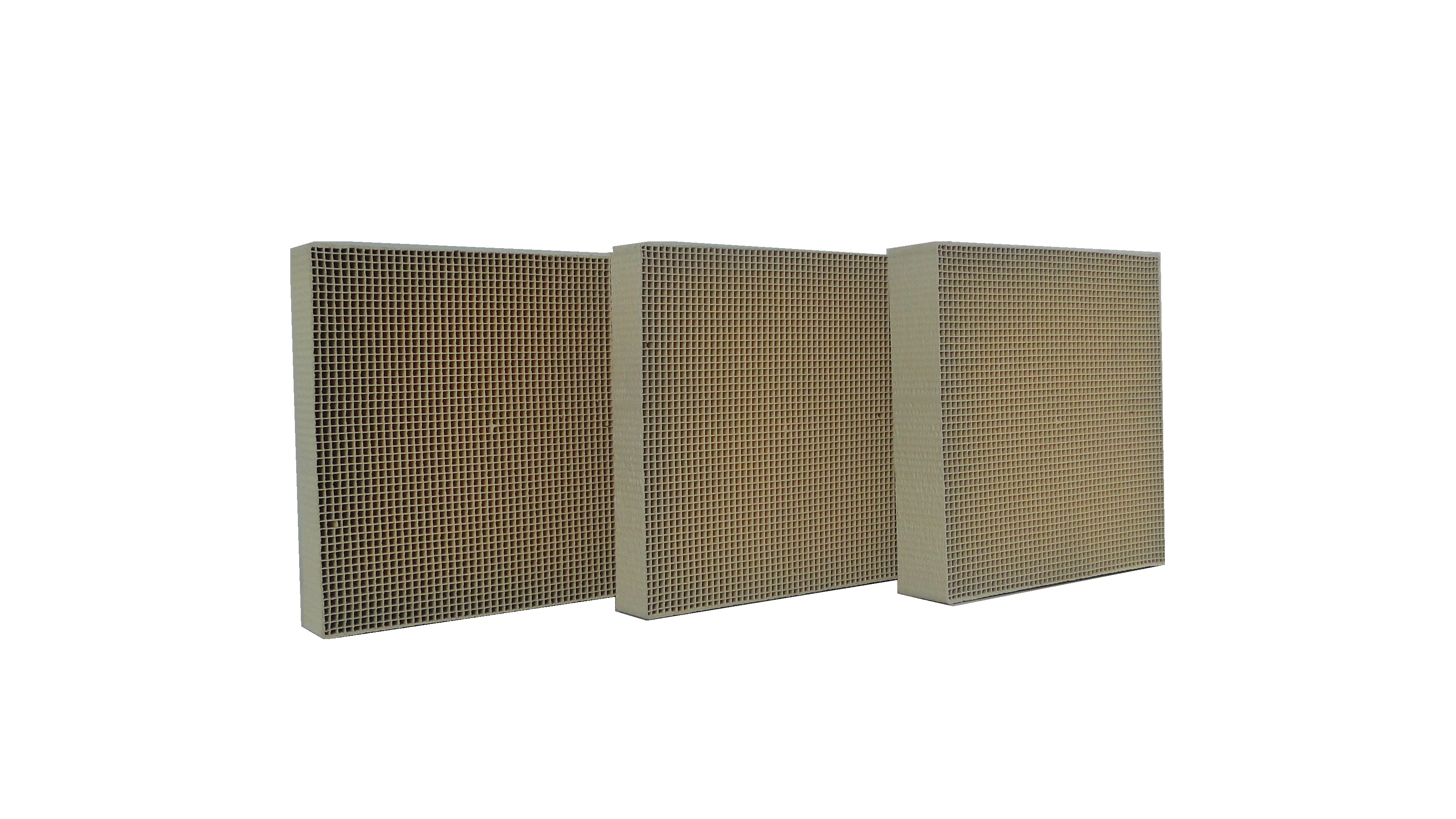The main three forms of denitrification catalysts
Publishdate:2018-10-08 Views:89
Denitration catalyst is a major catalyst product in the air purification equipment of power plants. In the purification reaction of the air purification equipment in power plants, selecting a suitable denitration catalyst can promote a series of chemical reactions between the reducing agent and the flue gas under certain conditions. At present, the commonly used denitrification catalysts in the market mainly have the following three forms.
Plate mesh type
Under normal circumstances, plate type denitration catalysts are a common form. Plate type catalysts use metal as the substrate, and the mixture is adhered to the metal mesh. After a series of pressing and calcination processes, the denitration catalyst and metal mesh are connected as a body and assembled into a denitration catalyst module. Plate type denitration catalysts have the characteristics of simple production process and strong purification effect.
2、 Cellular type
Honeycomb type denitration catalysts are usually homogeneous catalysts, which are made by passing the main component mixture of the denitration catalyst through a specially designed ceramic extrusion tool, making it into catalyst elements with fixed cross-sectional sizes but varying heights. These catalyst elements are then assembled to form the standard module of the honeycomb type denitration catalyst.
3、 Ripple type
The production process of corrugated denitration catalysts is more complex than the previous two, requiring reinforced glass fibers to support the substrate and immerse the active components of various catalysts into the surface of the denitration catalyst. Through this special manufacturing method, the aim is to improve the activity of the denitration catalyst and reduce its oxidation rate. The denitrification catalyst obtained through this method has stronger performance and more significant purification effect in air purification.
The main forms of real denitration catalysts are the above three, namely plate mesh, honeycomb, and corrugated denitration catalysts, which are usually suitable for different environments and occasions. Customers need to inquire with the manufacturer in detail about the main characteristics and performance parameters of each catalyst form when making a selection, so as to choose the catalyst product that is suitable for themselves.

Denitration catalyst
Denitration catalyst is a major catalyst product in the air purification equipment of power plants. In the purification reaction of the air purification equipment in power plants, selecting a suitable denitration catalyst can promote a series of chemical reactions between the reducing agent and the flue gas under certain conditions. At present, the commonly used denitrification catalysts in the market mainly have the following three forms.
Plate mesh type
Under normal circumstances, plate type denitration catalysts are a common form. Plate type catalysts use metal as the substrate, and the mixture is adhered to the metal mesh. After a series of pressing and calcination processes, the denitration catalyst and metal mesh are connected as a body and assembled into a denitration catalyst module. Plate type denitration catalysts have the characteristics of simple production process and strong purification effect.
2、 Cellular type
Honeycomb type denitration catalysts are usually homogeneous catalysts, which are made by passing the main component mixture of the denitration catalyst through a specially designed ceramic extrusion tool, making it into catalyst elements with fixed cross-sectional sizes but varying heights. These catalyst elements are then assembled to form the standard module of the honeycomb type denitration catalyst.
3、 Ripple type
The production process of corrugated denitration catalysts is more complex than the previous two, requiring reinforced glass fibers to support the substrate and immerse the active components of various catalysts into the surface of the denitration catalyst. Through this special manufacturing method, the aim is to improve the activity of the denitration catalyst and reduce its oxidation rate. The denitrification catalyst obtained through this method has stronger performance and more significant purification effect in air purification.
The main forms of real denitration catalysts are the above three, namely plate mesh, honeycomb, and corrugated denitration catalysts, which are usually suitable for different environments and occasions. Customers need to inquire with the manufacturer in detail about the main characteristics and performance parameters of each catalyst form when making a selection, so as to choose the catalyst product that is suitable for themselves.

Denitration catalyst




